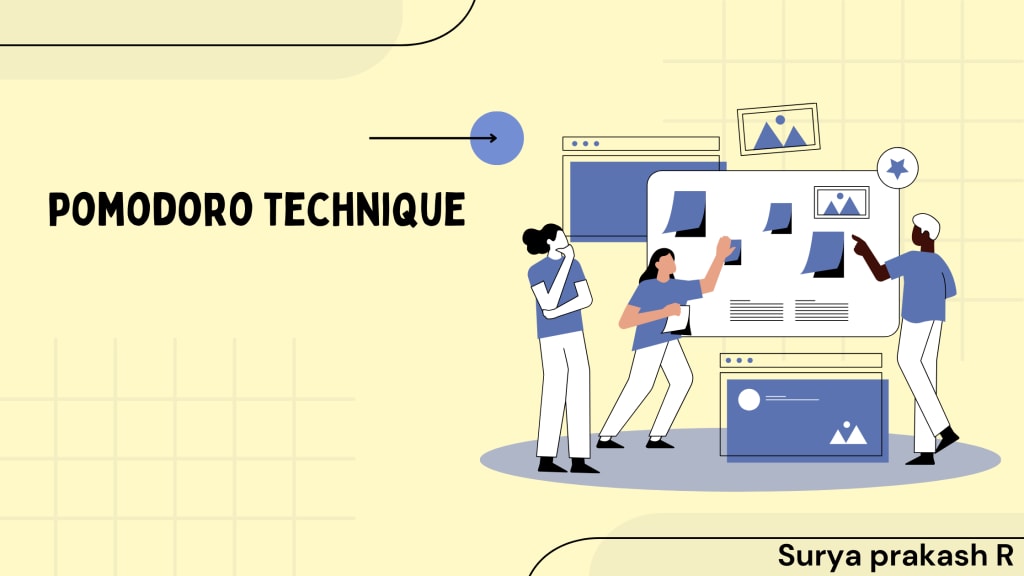The Pomodoro Technique
Boosting Productivity

The Pomodoro Technique: An Effective Time Management Method for Boosting Productivity
Introduction:
The Pomodoro Technique is a time management method that has been around for over three decades, and it remains one of the most effective ways to boost productivity and stay focused. This method was developed by Francesco Cirillo in the late 1980s and is based on the idea that short bursts of intense focus can lead to better results than long hours of distracted work. Here's everything you need to know about the Pomodoro Technique and how you can use it to maximize your productivity.
What is the Pomodoro Technique?
The Pomodoro Technique is a simple time management method that involves working in 25-minute intervals, called "pomodoros," followed by a 5-minute break. After four pomodoros, you take a longer break of 15 to 20 minutes. The idea behind this method is that by working in focused bursts, you can increase your productivity and avoid burnout. The Pomodoro Technique is based on the concept of the "ultradian rhythm," which is the natural fluctuation of energy and attention that occurs throughout the day. By working in focused intervals, you can take advantage of your natural energy and attention cycles to get more done in less time.
Why Does the Pomodoro Technique Work?
The Pomodoro Technique works because it helps you stay focused and avoid distractions. When you work in focused 25-minute intervals, you eliminate the temptation to check your phone, answer emails, or get lost in social media. By forcing yourself to work in short bursts, you increase your focus and get more done in less time. Additionally, the short breaks in between pomodoros give your brain a chance to rest and recharge, which can help you avoid burnout.
How to Use the Pomodoro Technique
Using the Pomodoro Technique is simple and straightforward. Here's how you can get started:
- Choose a task: The first step in using the Pomodoro Technique is to choose a task that you want to work on. It's best to start with a task that is simple and can be completed in one pomodoro. As you become more comfortable with the technique, you can move on to more complex tasks.
- Set a timer: Next, set a timer for 25 minutes. You can use a traditional kitchen timer, a digital timer, or an app specifically designed for the Pomodoro Technique.
- Start working: Once the timer starts, begin working on your task. Do your best to stay focused and avoid distractions. If you get distracted, simply return your focus to the task at hand.
- Take a break: When the timer goes off, take a 5-minute break. During this time, step away from your work and do something completely different, such as stretching, getting a drink of water, or reading a book.
- Repeat the process: After your 5-minute break, start the next pomodoro. Repeat this process for four pomodoros, and then take a longer break of 15 to 20 minutes.
Tips for Using the Pomodoro Technique
Here are some tips to help you get the most out of the Pomodoro Technique:
- Stay focused: The key to the Pomodoro Technique is staying focused during each 25-minute interval. Do your best to eliminate distractions and stay focused on the task at hand.
- Keep a task list: Keeping a task list can help you stay organized and keep track of what you need to get done. Write down all of the tasks that you need to complete, and then prioritize them based
Conclusion :
The Pomodoro Technique is a popular time management method, but there are many other similar techniques that can help you stay focused and productive we will see in upcoming posts
About the Creator
Enjoyed the story? Support the Creator.
Subscribe for free to receive all their stories in your feed. You could also pledge your support or give them a one-off tip, letting them know you appreciate their work.






Comments
There are no comments for this story
Be the first to respond and start the conversation.